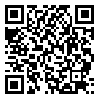BibTeX | RIS | EndNote | Medlars | ProCite | Reference Manager | RefWorks
Send citation to:
URL: http://tkj.ssu.ac.ir/article-1-767-en.html
Introduction: The aim of this study was to determine the mediator role of anxiety and depression in relationship between attachment styles and job satisfaction among teachers.
Methods: The method of the present study was correlation. Statistical population in this research, included all of 210 teachers of Jajarm schools in 2015. Then according to Kerjcie and Morganʼ sampling table, 136 teachers (60 women and 76 men) were selected based on stratified random sampling method. Attachment styles questionnaire (Kulinz & Rid, 1990), General Health Questionnaire (Goldberg & williams, 1988), and Job Descriptive Index (Smith, et.al, 1989) were used in order to collect data. Gathered Data were analyzed by Pearson's correlation coefficient and path analysis using SPSS and AMOS softwares.
Results: Results indicated that there was a negative relationship between attachment with anxiety and depression (P<0.001). Also, there was a significant positive relationship between secure attachment style and job satisfaction (P <0.05). There was a significant negative relationship between anxiety and depression with job satisfaction (P <0.05), as well.
Conclusion: Safe attachment style increases the job satisfaction of teachers by decreasing anxiety. The ambivalent attachment style decreases the job satisfaction of teachers by increasing anxiety.
Received: 2016/06/5 | Accepted: 2016/10/24 | Published: 2017/07/19
| Rights and permissions | |
 |
This work is licensed under a Creative Commons Attribution-NonCommercial 4.0 International License. |





